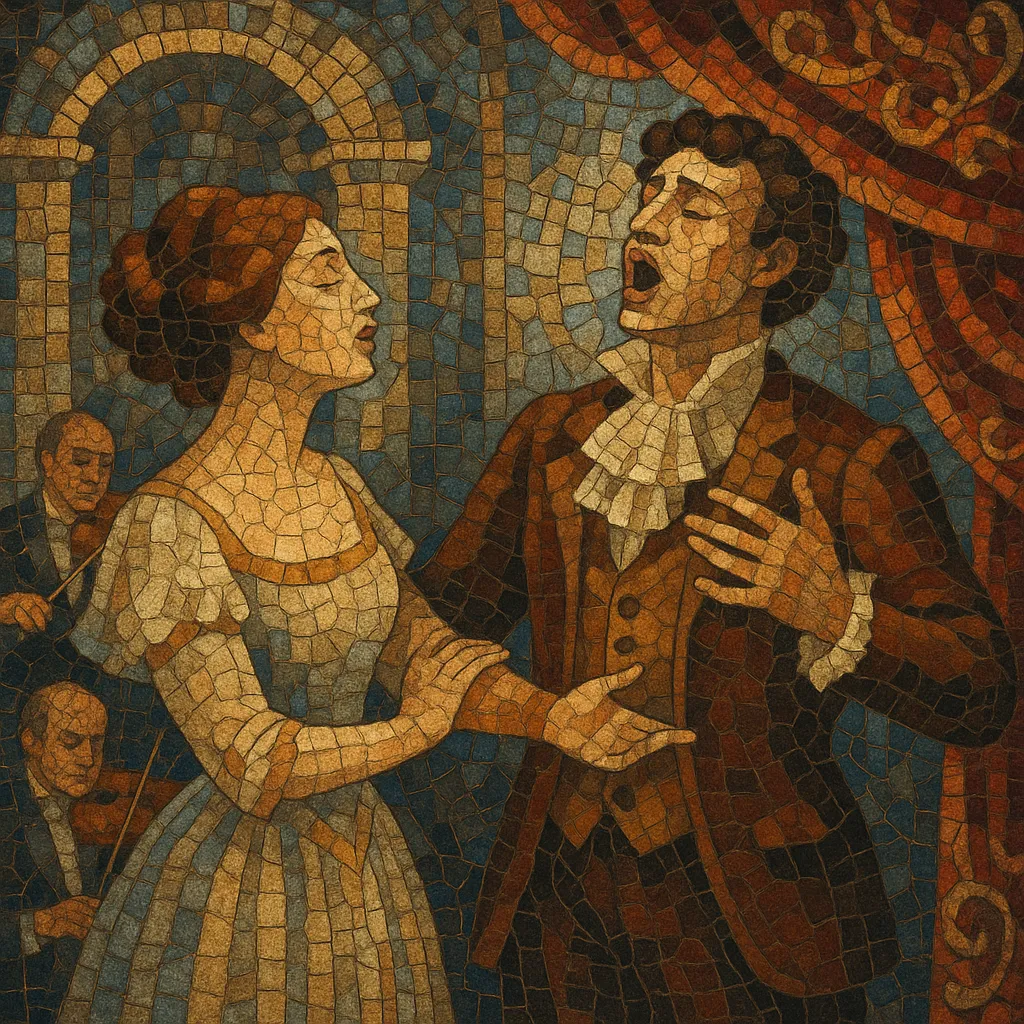Opéra comique is a French operatic genre defined by the presence of spoken dialogue between musical numbers rather than by comic subject matter. Early works used popular tunes (vaudevilles) with newly written words, later evolving into fully original scores with arias, ensembles, finales, and orchestral writing.
Originating in Paris fairground theatres, the genre developed at the Opéra-Comique institution into a flexible form that could encompass light, humorous plots as well as serious and even tragic stories. By the 19th century it ranged from graceful, classical elegance to full Romantic drama—so much so that a tragedy like Bizet’s Carmen is still called an opéra comique because it originally included spoken dialogue.
Typical features include an overture, clear French prosody, memorable lyrical numbers (romances, couplets), conversational pacing, and finales that integrate multiple characters on stage. Harmony and orchestration track the broader shift from late Baroque/Classical clarity to Romantic color and intensity.
Opéra comique began in the Paris fairs (Saint-Germain and Saint-Laurent) in the early 1700s, where performers interpolated spoken dialogue and borrowed popular melodies (vaudevilles) to create satirical stage pieces. This hybrid of theatre and song emerged alongside—and in contrast to—courtly French opera traditions such as the tragédie en musique.
By mid-century the form moved from contrafacta to original composition, crystallizing at the Opéra-Comique theatre. Composers like Pierre-Alexandre Monsigny, François-André Danican Philidor, and above all André Ernest Modeste Grétry established a clear, elegant idiom: spoken scenes alternating with tuneful numbers, lucid orchestration, and finales that gathered dramatic threads. Nicolas Dalayrac and François-Adrien Boieldieu continued refining the style into the early 19th century.
During the 1800s the genre broadened dramatically. Louis-Ferdinand Hérold, Daniel Auber, and Adolphe Adam infused greater melodic charm and rhythmic vitality; later, Fromental Halévy, Ambroise Thomas, and Georges Bizet deepened the expressive range with richer harmony and orchestration. While many works remained light or sentimental, others grew serious—even tragic—yet retained the defining spoken dialogue. Bizet’s Carmen (1875) epitomizes this paradox: a dark drama in the opéra comique framework.
Over time, some revivals substituted sung recitatives for the original spoken dialogue, blurring lines with through-composed grand opera. Nonetheless, the genre’s core identity—spoken dialogue plus self-contained musical numbers—shaped European stage music widely. It directly informed German Singspiel and English ballad opera, and fed into the development of 19th‑century operetta and, by extension, modern musical theatre.


